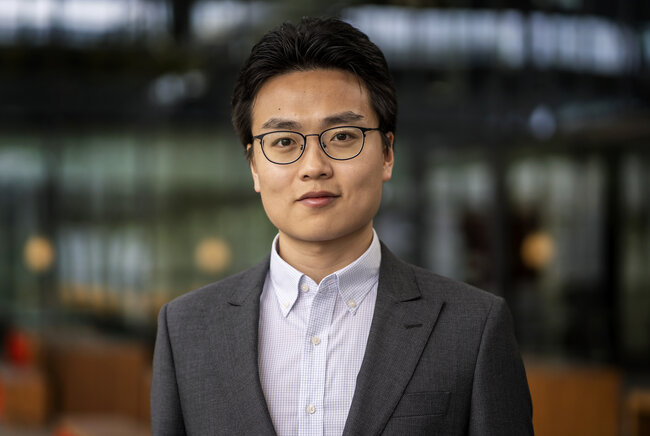Enabling energy-efficient and accurate ion energy control for semiconductor manufacturing
Qihao Yu defended his thesis at the department of Electrical Engineering on September 13th.

Plasma is used in essential process steps in semiconductor manufacturing, for both deposition and etching. For his PhD research Qihao Yu derived an equivalent electric circuit (EEC) of the plasma processing that depicts the electrical behavior for all phases in tailored waveform biasing. It can be simulated in combination with the bias converter on a circuit level. Moreover, the ion energy distribution (IED) can also be reproduced from the circuit simulation. This method requires the voltage and current measurements on the bias converter side, which is non-intrusive to the process. The research provides a systematic solution for accurate ion energy control, from plasma processing modeling to converter design, control, and optimization, paving the way towards more energy-efficient and accurate semiconductor manufacturing.
The proposed model reveals that the below-zero portion of the falling edge of the voltage pulse determines the ion energy value, while the voltage slope determines the width of IED. The optimal slope should result in the narrowest IED, and it is dependent on the ion current and the substrate capacitance, thus varying under different operating conditions. Conventionally, this optimal slope is manually tuned by measuring the IED in real-time using a retarding field energy analyzer (RFEA). Such manual tuning needs to be repeatedly conducted once the operating conditions change. Meanwhile, the RFEA can introduce errors. This thesis develops an auto-tuning method, which finds the optimal slope based on mathematical relations between voltage and current, thus eliminating the need for an RFEA.
Use of multilevel voltage converters
Based on the proposed model, this thesis proposes a multilevel tailored waveform bias converter concept, which is based on efficient switched-mode operation. The original tailored waveform, specifically the voltage slope, is replaced by a sequence of monotonically decreasing voltage levels. Approximating the voltage slope with the multilevel waveform can introduce undesired voltage ripples on the substrate surface, which could broaden the IED. To overcome this, a filter inductor can be added to further reduce the voltage ripple, at the cost of a slower voltage pulse. This compromise is analyzed in this thesis, and the constraints for the multilevel waveform configurations given by the required IED are derived. Based on the analysis, it is found that multilevel voltage converters can be used in this application, offering the benefits of scalability and modularity compared to other existing concepts. Specially, an asymmetrical multilevel converter, formed by a T-type converter and two cascaded H-bridge converters, is proposed in this research.
Minimize the resonance
The plasma reactor is a capacitive load, thus forming an LC circuit with all the inductance in the converter loop. This LC circuit can cause severe resonance triggered by the voltage pulse. To minimize the resonance in a non-dissipative manner, a trajectory control method is developed. This method utilizes multiple intermediate voltage levels and determines a specific switching sequence during the rising and falling edge of the voltage pulse.
More accurate semiconductor manufacturing
A converter prototype is designed to verify the various concepts. The magnitude and frequency of the multilevel waveform are optimized by pushing the switching components to their limits based on a comprehensive switching loss model. Based on the EEC model, a plasma-reactor mockup is designed and built to emulate the electrical responses of the plasma reactor, which is used as the qualification load for the converter prototype.
Title of PhD thesis: ‘Enabling Energy-Efficient and Accurate Ion Energy Control for Semiconductor Manufacturing’. Supervisors: prof.ir. Korneel Wijnands, Bas Vermulst and Erik Lemmen.